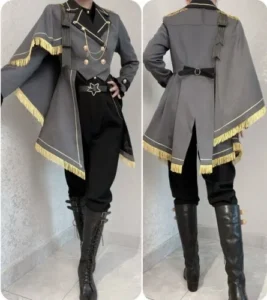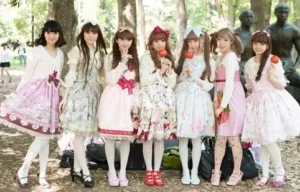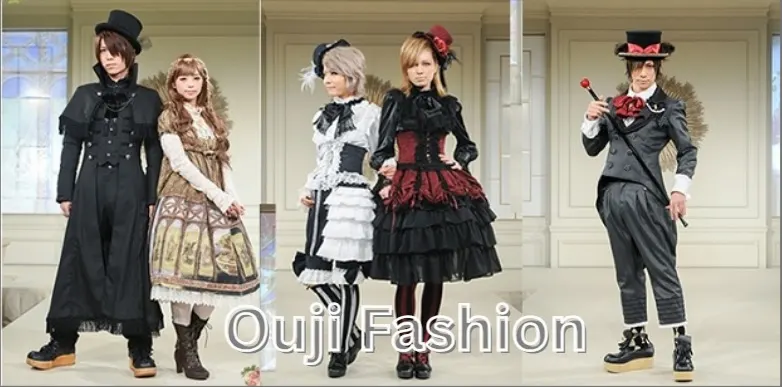Ouji fashion is a regal and androgynous subculture of Japanese streetwear inspired by Victorian-era and Rococo prince attire. Often called “Prince Kei,” it stands apart with its opulent fabrics, tailored jackets, and whimsical accessories. Whether it’s ouji fashion male or ouji fashion female, the style transcends gender norms and embraces individuality with elegance.
In this article, we explore the origins, evolution, and styling tips of ouji fashion, along with how men and women across the world are embracing this majestic aesthetic.
What is Ouji Fashion?
Definition and Origins
Ouji fashion (王子ファッション) literally translates to “Prince Fashion” in Japanese. It emerged from the Lolita fashion movement in the early 2000s but diverged by focusing on masculine royal attire rather than frilly dresses.
-
Rooted in Japanese Harajuku culture
-
Draws from Victorian, Rococo, and Baroque influences
-
Incorporates lace, velvet, jabots, breeches, cravats, and military-style jackets
While often mistaken for male-only attire, ouji fashion female enthusiasts are just as active and influential in the community.
Key Elements of Ouji Fashion
Essential Pieces in a Ouji Wardrobe
Ouji fashion outfits often include:
-
Tailored waistcoats and jackets
-
Decorative shorts or breeches
-
Knee-high socks or tights
-
Lace cravats and jabots
-
Top hats, crowns, and brooches
-
Elegant shoes like oxfords or platform boots
Color Palette and Fabrics
While the classic palette is black, navy, ivory, and gold, ouji fashion male and female stylists experiment with:
-
Pastels for a softer look
-
Rich fabrics like brocade, velvet, and satin
-
Layering textures for visual depth
Ouji Fashion Male Style Guide

How Men Rock the Prince Aesthetic
The ouji fashion male style is characterized by its blend of elegance and edginess:
-
Fitted military jackets over collared shirts
-
Embellished vests with crests or embroidery
-
Short, structured pants paired with lace-trimmed socks
-
Dark makeup or subtle eyeliner for an artistic touch
Some key male icons in the ouji community include Akira, Arisugawa Alice, and Midori Fukasawa, who have popularized the trend worldwide.
Ouji Fashion Female Trends
How Women Make the Prince Look Their Own
Ouji fashion female stylists redefine gender norms by donning princely clothing that highlights strength and charm.
-
Feminine touches include soft ruffles, hair bows, and mini top hats
-
Hairstyles often include curls, ponytails, or decorated wigs
-
Makeup is more pronounced—rosy cheeks, smoky eyes, and highlighted brows
Many Lolita fashion fans transition to ouji fashion female styles as they explore androgyny and gothic elegance.
Difference Between Ouji Fashion and Lolita Fashion
Two Aesthetics, One Subculture
While both styles belong to the Japanese street fashion scene, their identities differ:
| Category | Ouji Fashion | Lolita Fashion |
|---|---|---|
| Gender Focus | Androgynous, princely | Feminine, doll-like |
| Silhouette | Structured, sharp lines | Bell-shaped dresses with petticoats |
| Accessories | Cravats, hats, military pins | Bows, bonnets, lace gloves |
| Footwear | Oxfords, boots | Mary Janes, platform shoes |
Despite the differences, many enthusiasts combine the two or participate in both communities.
Ouji Fashion in Pop Culture

Influence on J-Pop, Anime, and Beyond
Ouji fashion has heavily influenced:
-
Visual kei bands like Versailles and Malice Mizer
-
Anime characters such as Ciel Phantomhive (Black Butler)
-
Cosplay and fashion shows across Japan and global conventions
These cultural icons have brought ouji fashion male and female looks into mainstream awareness, making them global fashion statements.
How to Get Started with Ouji Fashion
Building Your First Coordinate (Outfit)
For newcomers, here’s a simple starter guide:
-
Choose a theme: Gothic, Classic, or Sweet Ouji
-
Select core items: Jacket, shorts, blouse
-
Add accessories: Hat, cravat, pins
-
Footwear: Lace-up boots or oxfords
-
Confidence: Carry the outfit with poise
Popular brands to explore:
-
Alice and the Pirates
-
Atelier Boz
-
Moi-même-Moitié
-
Putumayo
Many of these also cater to both ouji fashion male and female enthusiasts.
Online Communities and Social Media
Join the Global Prince Circle
The best part of embracing ouji fashion is the vibrant online community:
-
Facebook groups, Reddit, and Discord for styling tips
-
Instagram hashtags: #oujifashion #princekei
-
Influencers share regular lookbooks and tutorials
-
Brands offer limited-edition collections for international fans
Whether you’re into ouji fashion male or female styles, there’s a space for you to share and evolve your wardrobe.
Challenges and Criticism
Breaking Stereotypes and Misconceptions
Some common challenges:
-
Being misgendered due to androgynous styling
-
Facing skepticism from mainstream fashion circles
-
High cost of importing Japanese brands
But the growing support for non-binary fashion and global appreciation of niche subcultures has strengthened the presence of both ouji fashion male and female stylists.
✅ Summary
Ouji fashion is a powerful, gender-inclusive style rooted in royal aesthetics. With its tailored silhouettes, elegant accessories, and rich history, it’s embraced by ouji fashion female fans worldwide. This fashion revolution continues to redefine modern elegance while honoring tradition and individuality.
FAQs of Ouji Fashion
What is ouji fashion?
Ouji fashion is a Japanese street style inspired by Victorian prince attire, blending elegance, androgyny, and elaborate, regal clothing elements.
What era is ouji fashion?
Ouji fashion is inspired by the Victorian and Rococo eras, reflecting 18th to 19th-century European aristocratic and princely clothing styles.

